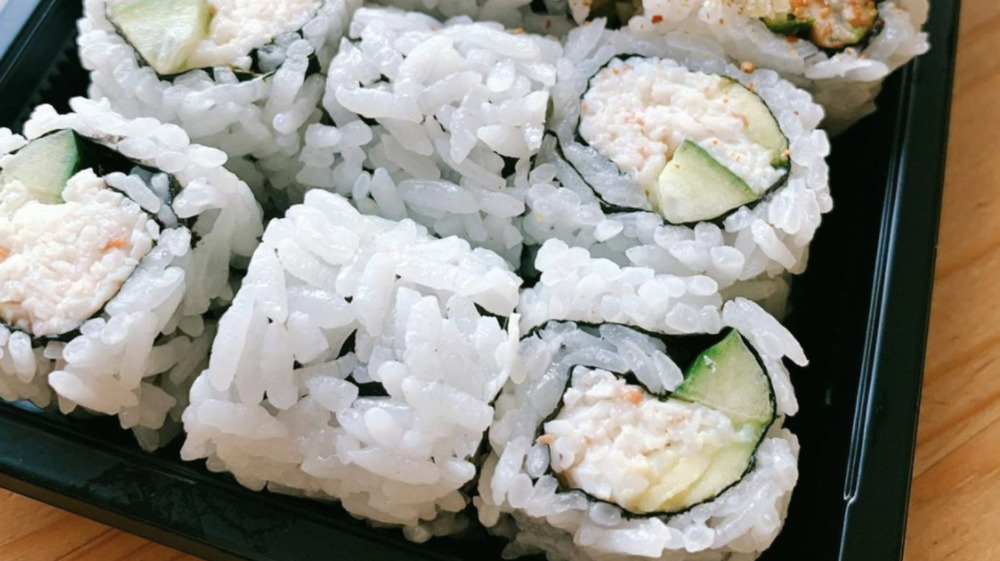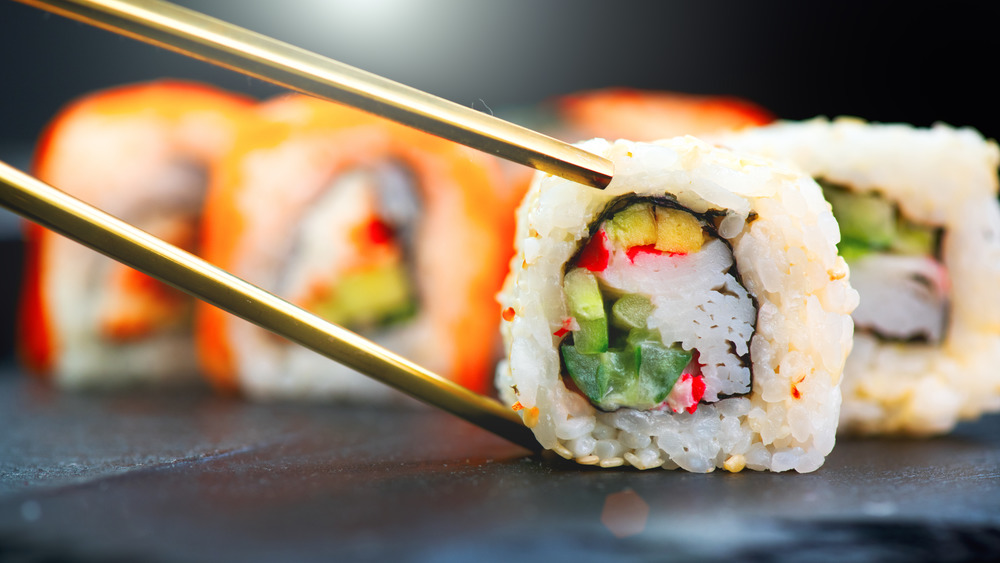This Classic Sushi Roll Isn't Actually From California
Every sushi fan has their favorite roll, whether it's the classic spicy tuna roll, the OG Philadelphia roll, or the vegetarian cucumber roll. But according to a DoorDash survey, there's one roll that has earned the title of the most popular (a.k.a. the most ordered) sushi roll in America: the California roll. Traditionally stuffed with avocado, cucumber, crab meat, and rolled in seaweed and sushi rice, the roll is beloved by raw fish newbies and veterans alike.
As the name implies, most of us would probably assume that the California roll is from, well, California. And the inclusion of avocado points to the West Coast, too — after all, isn't it home to the ever-trendy avocado toast? However, it turns out that everyone's go-to sushi roll didn't come from the Golden State. Here's what you likely didn't know about the California roll and its unlikely origins.
The California roll isn't even from America
The California roll isn't from a different state — it's from an entirely different country. The classic roll was first invented in the 1970s by a sushi chef named Hidekazu Tojo, who came to Vancouver from Japan (via Food 52). Initially stumped by why his Canadian neighbors weren't interested in his delicious sushi offerings, Tojo quickly realized it was because the raw fish was simply too "stinky." As a solution, he swapped the usual fish for avocado and local crab and added a little mayonnaise, which he told Food 52 was "a little bit fancy."
That wasn't all, though. According to an interview Tojo did with Insider, North Americans also were turned off by the seaweed that traditionally wraps around sushi. "They like to say, 'I'd like to try same thing that Japanese people eat... but I cannot eat the seaweed,'" he said, adding, "They afraid. OK, if you don't like the seaweed, that's fine. Then I did it inside out." Hence why the California roll as we know it, has rice on the outside of the seaweed.

